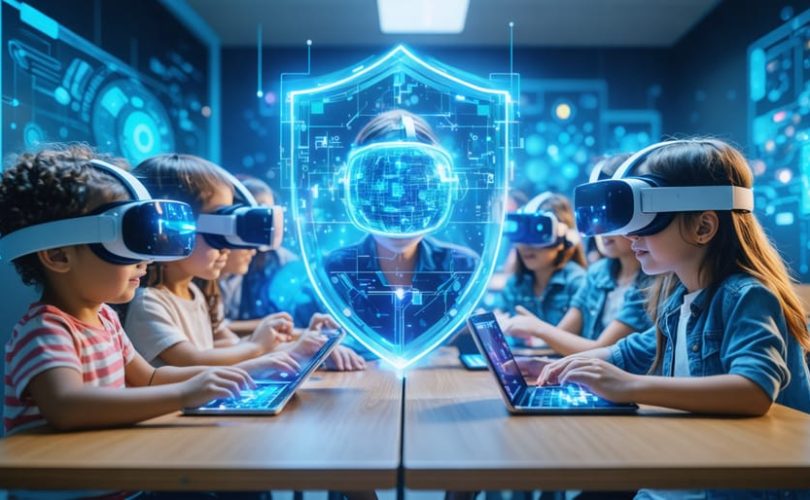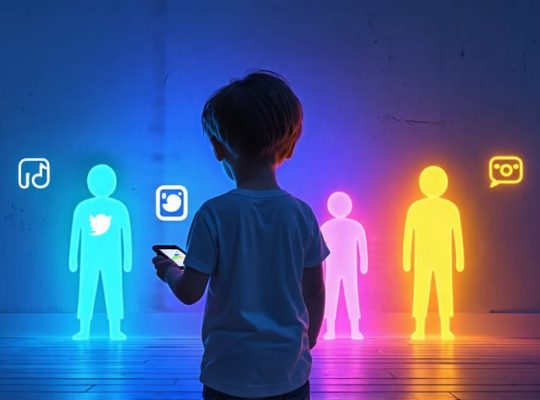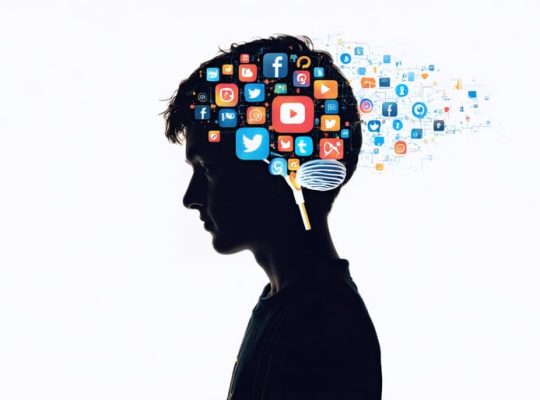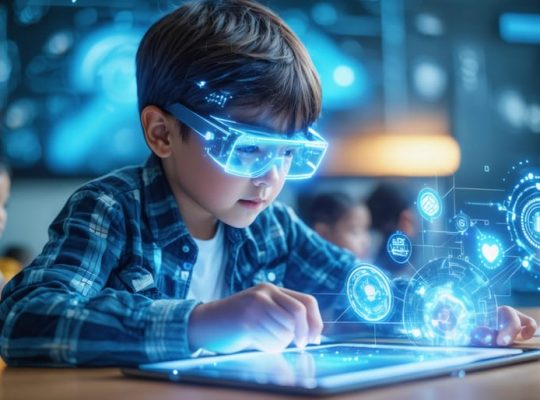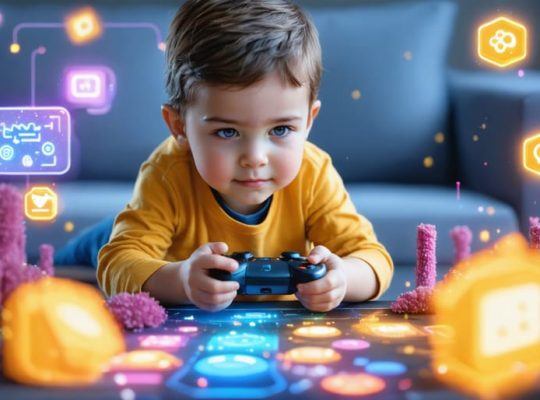As virtual worlds and intelligent systems increasingly shape our children’s digital experiences, understanding the intersection of Artificial Intelligence (AI) and Extended Reality (XR) has become essential for every parent and educator. These technologies aren’t just changing how our kids learn and play – they’re transforming the very nature of childhood interaction and development.
Today’s children are growing up in a world where AI-powered virtual tutors can adapt to their learning styles, while immersive XR environments let them explore ancient civilizations or conduct virtual science experiments from their classroom. Yet with these extraordinary opportunities come important questions about screen time, privacy, and emotional well-being.
For parents and educators navigating this new digital landscape, finding the right balance between embracing innovation and protecting our children’s development is crucial. By understanding how AI and XR technologies work together, we can make informed decisions about their use in education and entertainment while ensuring our children’s digital experiences remain healthy, enriching, and safe.
This thoughtful integration of emerging technologies into our children’s lives isn’t just about managing risks – it’s about preparing them for a future where AI and XR will be fundamental to how we live, work, and learn.
Understanding AI and XR in Children’s Digital World
What Are AI and XR?
Artificial Intelligence (AI) and Extended Reality (XR) are two transformative technologies that are becoming increasingly present in our children’s daily lives. AI refers to computer systems that can perform tasks that typically require human intelligence, such as recognizing speech, making decisions, or solving problems. Think of AI as a helpful assistant that can learn and adapt, like when your phone suggests the next word as you type or when an educational app adjusts to your child’s learning pace.
Extended Reality (XR) encompasses several technologies that blend the digital and physical worlds, including Virtual Reality (VR), Augmented Reality (AR), and Mixed Reality (MR). The impact of virtual reality and other XR technologies on children has become increasingly important to understand. VR creates completely immersive digital environments, AR overlays digital elements onto the real world (like Pokémon GO), and MR allows digital objects to interact with the real environment.
Together, these technologies are reshaping how our children learn, play, and interact with the world around them. As parents and educators, understanding these tools helps us better guide our children’s digital experiences.
Common AI and XR Applications for Children
Today’s children are growing up with AI and XR technologies that offer engaging ways to learn and play. Educational apps like DuoLingo Kids use AI to personalize language learning, adapting lessons based on each child’s progress and learning style. Meanwhile, apps like QuiverVision bring coloring pages to life through augmented reality, making artistic expression more interactive and exciting.
Virtual reality applications are also making their mark in children’s education. Programs like ClassVR let students take virtual field trips to historical sites, explore the human body in 3D, or journey through space – experiences that were once impossible in traditional classrooms. Gaming platforms like Roblox incorporate AI-powered characters and VR features that encourage creativity and social interaction in safe, monitored environments.
Social learning platforms such as Mystery Science now use AI to answer children’s questions in age-appropriate ways, while AR apps like Pokemon GO encourage physical activity alongside digital play. These technologies, when used thoughtfully, can support children’s development by making learning more interactive, personalized, and engaging while fostering digital literacy skills essential for their future.
Benefits of AI and XR for Children’s Development
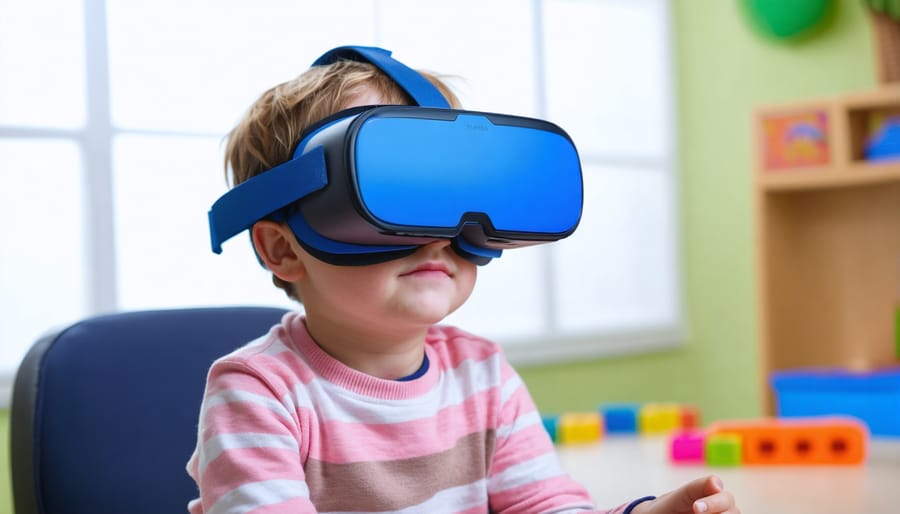
Enhanced Learning Experiences
The combination of AI and XR is revolutionizing how children learn, creating personalized and engaging educational experiences that were once impossible. AI-powered systems can adapt to each child’s learning pace, automatically adjusting difficulty levels and providing extra support when needed. For instance, if a student struggles with multiplication, the AI can break down problems into smaller, more manageable steps and offer additional practice exercises.
XR technology brings these personalized lessons to life through immersive experiences. Students can take virtual field trips to ancient civilizations, explore the human body from the inside, or conduct safe chemistry experiments in virtual labs. A child learning about dinosaurs can walk amongst them in virtual reality, while AI tracks their engagement and understanding, adjusting the experience accordingly.
Teachers report that this combination helps students stay focused and retain information better. Sarah Chen, a fourth-grade teacher, shares, “My students are more engaged than ever. The AI helps me identify where each child needs support, while the XR experiences make complex concepts tangible and memorable.”
These technologies are particularly beneficial for children with different learning styles or special needs. The AI can identify unique learning patterns and preferences, while XR provides multi-sensory experiences that accommodate various ways of learning. From visual learners to those who learn best through movement, the technology adapts to meet each child where they are.
Developing Future Skills
As our children grow up in an increasingly digital world, developing the right skills to navigate AI and XR technologies becomes crucial for their future success. Digital literacy goes beyond simply knowing how to use devices – it involves understanding how these technologies work, their impact on daily life, and how to use them responsibly.
Parents and educators can help children build these skills through guided exploration and hands-on learning experiences. Start with basic concepts like understanding what AI is and how it makes decisions, using age-appropriate examples like smart home devices or video game characters. For XR technologies, begin with simple augmented reality apps that overlay digital information onto the real world, helping children grasp the concept of mixed realities.
It’s equally important to develop critical thinking skills that help children evaluate digital content and understand the difference between AI-generated and human-created materials. Teaching them to ask questions like “How does this work?” and “Is this real?” helps build healthy skepticism and digital awareness.
Consider incorporating collaborative projects that combine traditional learning with new technologies. For example, students might use AR apps for interactive storytelling or work with simple AI tools to solve problems. These experiences help develop both technical competence and essential soft skills like creativity and teamwork.
Remember that learning these skills should be an ongoing process, adjusted to each child’s age and development level. The goal isn’t to create tech experts, but to prepare children for a future where digital literacy is as fundamental as reading and writing.
Potential Risks and Concerns
Digital Safety Concerns
As children engage more with AI and XR technologies, parents and educators need to be aware of two primary digital safety concerns: privacy protection and content exposure. Many XR applications collect personal data, including movement patterns, voice recordings, and even eye-tracking information. While AI-powered safety features can help protect children, it’s essential to understand what information is being collected and how it’s being used.
Children using XR devices may also encounter inappropriate content, whether through deliberate searches or accidental exposure. Virtual worlds and social XR spaces can expose young users to mature themes, cyberbullying, or interactions with unknown adults. This risk increases when AI systems recommend content based on user behavior, potentially creating concerning content bubbles.
Dr. Sarah Chen, a child safety expert, explains: “The immersive nature of XR makes content exposure more impactful than traditional screen time. What children experience in virtual environments can feel very real to them, making content filtering and supervision particularly important.”
To address these concerns, families should:
– Review privacy settings regularly
– Use child-specific XR applications with built-in safety features
– Monitor content access and social interactions
– Have open discussions about online safety
– Set clear boundaries for technology use
– Keep devices in shared family spaces
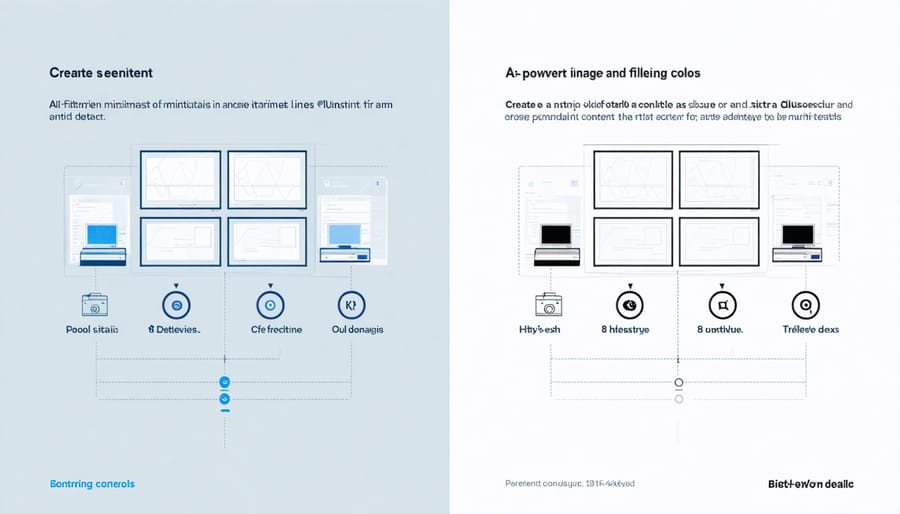
Mental Health Considerations
As children increasingly engage with AI and XR technologies, parents and educators are noticing significant changes in their mental well-being. While these technologies offer exciting educational opportunities, they also bring digital anxiety concerns that deserve our attention.
Studies show that extended use of immersive technologies can impact attention spans, with children showing difficulty focusing on traditional learning methods after prolonged XR exposure. Dr. Sarah Chen, a child psychologist, notes, “Children’s developing brains are particularly sensitive to rapid-fire digital stimulation, which can make slower-paced real-world activities feel less engaging.”
Social development is another crucial consideration. While AI and XR can facilitate unique social interactions, they shouldn’t replace face-to-face communication. Children need balanced exposure to both digital and physical social experiences to develop healthy relationship skills.
The good news is that mindful implementation can help minimize these risks. Setting clear boundaries, encouraging regular breaks, and maintaining open discussions about digital experiences can help children develop a healthy relationship with these technologies. Remember to watch for signs of technology-related stress, such as increased irritability, sleep problems, or social withdrawal.
By staying informed and responsive to our children’s needs, we can help them navigate this digital landscape while protecting their mental well-being.
Practical Guidelines for Parents
Setting Healthy Boundaries
As AI and XR technologies become increasingly integrated into children’s lives, managing screen time effectively is crucial for their well-being. Start by establishing clear, age-appropriate boundaries through open family discussions. Create a technology use agreement that outlines when and how long children can engage with AI and XR devices.
Consider implementing the “20-20-20 rule”: every 20 minutes, take a 20-second break and look at something 20 feet away. This helps prevent digital eye strain and promotes healthy viewing habits. Set up designated tech-free zones and times, such as during meals or an hour before bedtime, to maintain balance in daily routines.
Use parental control features and content filters to ensure age-appropriate experiences. Many XR headsets and AI-powered devices offer built-in safety settings that can limit access to certain content types or restrict usage duration. Remember to regularly review and adjust these settings as your child grows and develops.
Dr. Sarah Chen, a child development specialist, suggests: “Create a reward system that encourages responsible technology use. When children follow the agreed-upon boundaries, acknowledge their efforts and perhaps offer additional privileges or special activities.”
Make boundary-setting a collaborative process by involving your child in decisions about their digital wellness. This approach helps them understand the importance of balance and develops their self-regulation skills. Remember to model healthy technology use yourself – children often learn best by example.

Selecting Appropriate AI and XR Content
When selecting AI and XR content for children, it’s essential to approach the decision with careful consideration. Start by reviewing age ratings and content descriptions, much like you would with traditional media. Look for applications that align with your child’s developmental stage and educational goals.
Dr. Sarah Chen, a child development specialist, recommends choosing interactive experiences that encourage creativity and problem-solving rather than passive consumption. “The best AI and XR applications are those that engage children in meaningful ways while maintaining appropriate boundaries,” she explains.
Consider these key factors when evaluating content:
Educational Value: Choose applications that support learning objectives and complement classroom curricula. Many teachers have found success with virtual science labs and interactive history experiences.
Safety Features: Look for robust parental controls and clear privacy policies. Applications should have mechanisms to limit screen time and protect personal information.
Social Components: If the content includes social features, ensure there are appropriate safeguards and monitoring systems in place.
Quality of Experience: Select well-designed applications with intuitive interfaces. Poor design can lead to frustration and negative experiences.
Parent Lisa Martinez shares, “We started with educational AR apps that taught my daughter about animals. The interactive elements kept her engaged while learning, and I could easily monitor her usage.”
Remember to preview content before sharing it with children and regularly review their experiences. Stay involved in their digital journey by discussing what they’re learning and experiencing. This active participation helps ensure they’re getting the most benefit from these technologies while staying safe.
As we’ve explored throughout this article, AI and XR technologies offer exciting opportunities for children’s learning, creativity, and development. However, like any powerful tool, they require thoughtful implementation and careful oversight. The key is finding the right balance – embracing the benefits while being mindful of potential risks.
Remember that every child is unique, and what works for one family may not work for another. Focus on creating healthy digital habits early, setting clear boundaries, and maintaining open communication about technology use. When introducing AI and XR experiences, start slowly and observe how your child responds.
Parents and educators play a crucial role in guiding children through this digital landscape. By staying informed, involved, and maintaining a positive attitude toward technology, we can help young people develop a healthy relationship with these tools. Consider implementing screen-free times, encouraging outdoor activities, and creating opportunities for face-to-face social interaction.
The future of AI and XR in children’s lives is both exciting and challenging. As these technologies continue to evolve, our approach to managing them should too. Stay flexible, keep learning, and remember that technology should enhance, not replace, the fundamental experiences of childhood. By working together – parents, educators, and health professionals – we can help children thrive in an increasingly digital world while preserving their well-being and development.

